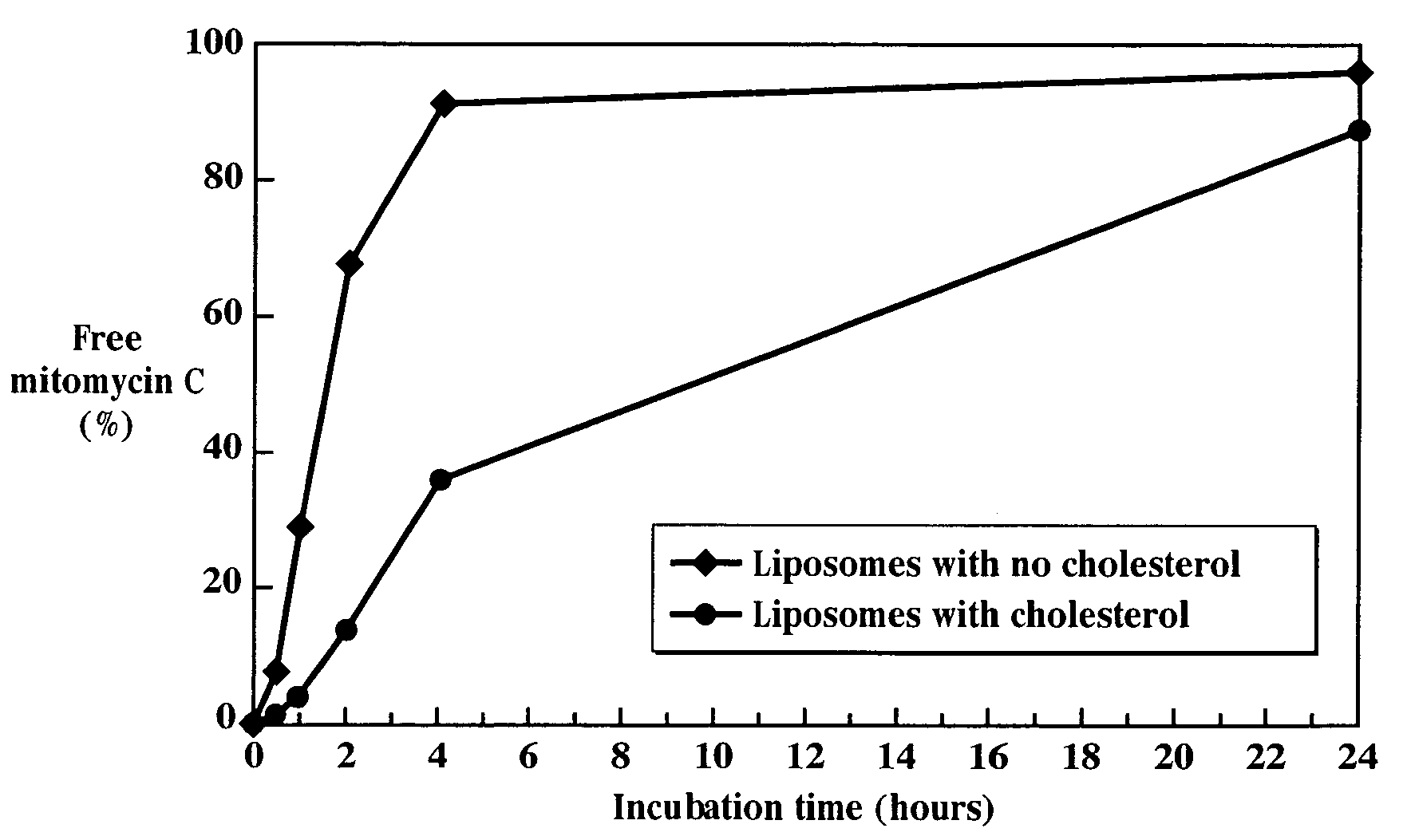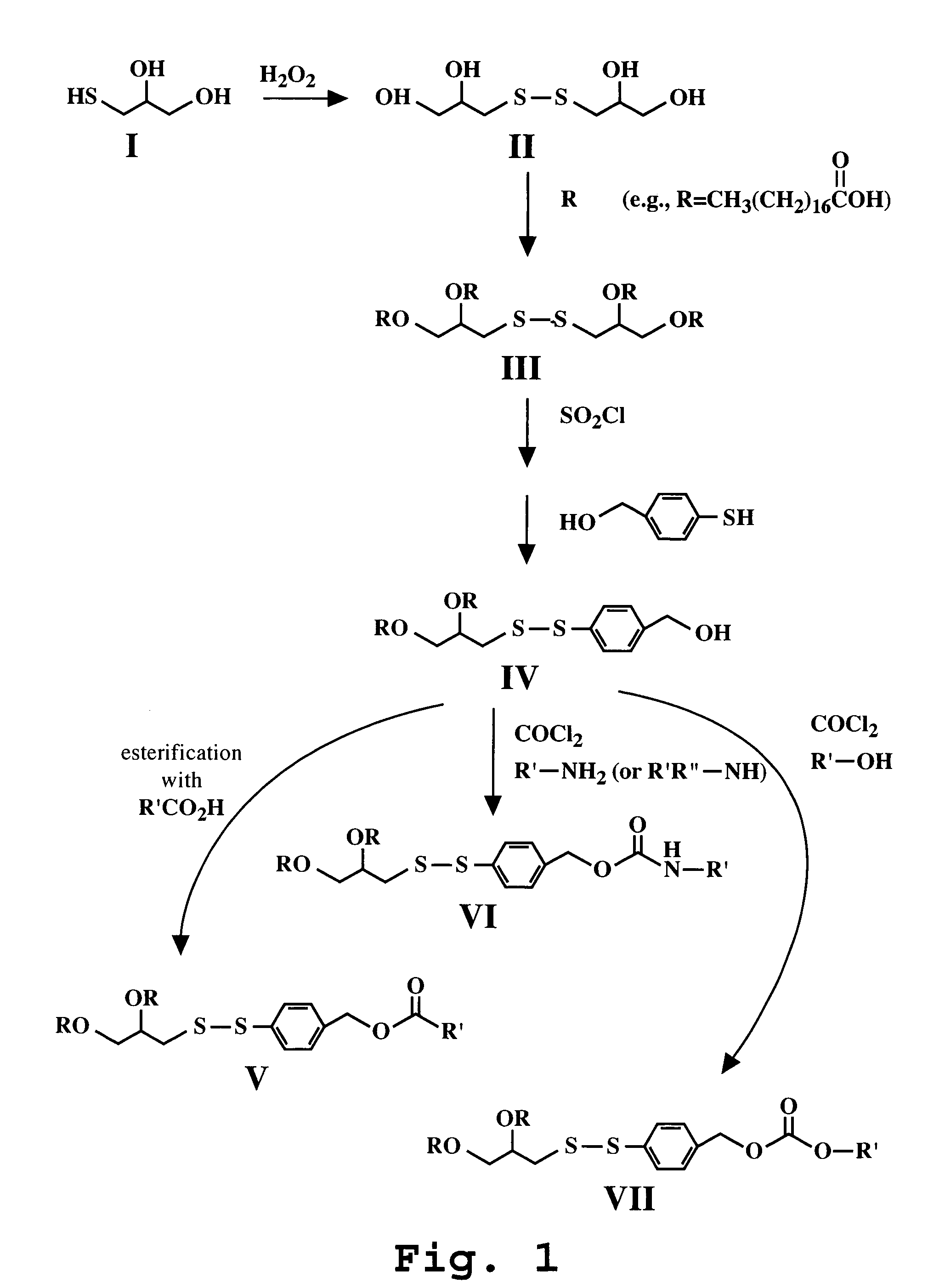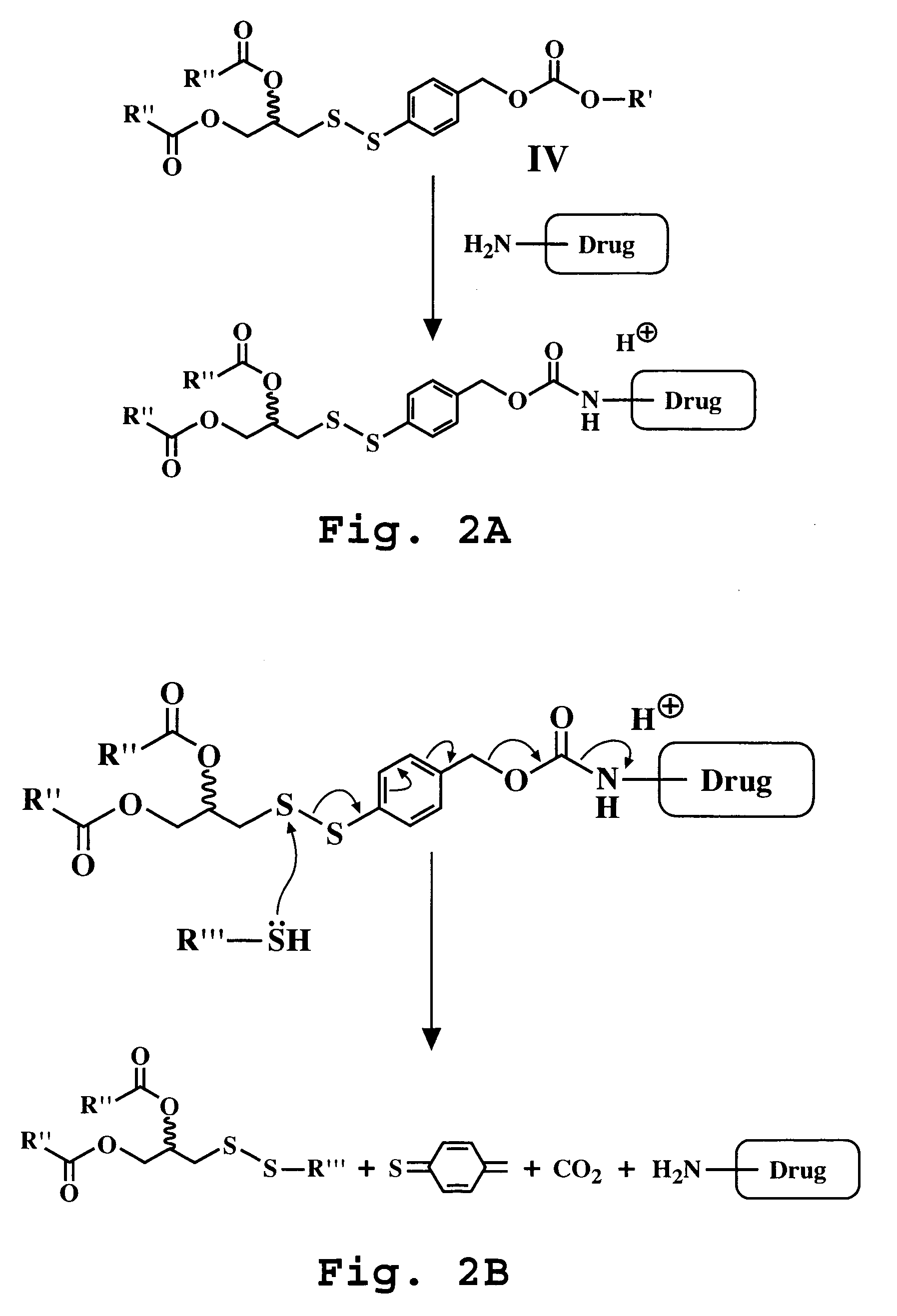Method for treating multi-drug resistant tumors
a multi-drug resistant, tumor technology, applied in the direction of antibacterial agents, drug compositions, biocides, etc., can solve the problems of drug resistance, poor patient prognosis, cancer cell limitation of successful chemotherapy, etc., and achieve the effect of reducing toxicity
- Summary
- Abstract
- Description
- Claims
- Application Information
AI Technical Summary
Benefits of technology
Problems solved by technology
Method used
Image
Examples
example 1
Synthesis of para-diacyidiglyceroldithiobenzalcohol (Compound IV) and ortho-diacyidiglyceroldithiobenzalcohol
A. para-diacyldiglyceroldithiobenzalcohol
[0118]This reaction is illustrated in FIG. 1. The procedure of Snyder, W. R. (Journal of Lipid Research, 28:949 (1987) was followed to prepare Compounds II and III.
[0119]A 100 ml round bottom flask containing 3-mercapto-1,2-propanediol (Compound I, 1 g, 9.26 mmol) in 5 ml of water was placed in an ice-bath. To this rapidly stirring flask, hydrogenperoxide (exactly 0.5 mole equivalent, 525 μl, 4.63 mmol) was dropwise added while maintaining the temperature between 30-40° C. At the end of the exothermic process, the reaction was allowed to stir overnight at room temperature. Water was azeotroped with rotary evaporation by successive addition of acetonitrile in 20 ml aliquots. The process of acetonitrile addition was repeated 3-4 times or until all water was removed, yielding a clear oil. After scratching the flask with a metal spatula an...
example 2
Synthesis of para-diacyldiglyceroldithiobenzal-mitomycin C (Compound XVIII)
[0126]This reaction is illustrated in FIG. 3A.
[0127]A 50 mL round bottom flask was charged with phosgene (3.1 mmol) and toluene (5 mL) and the solution was cooled to 0° C. A solution of para-diacyl-diglycerol-dithiobenzal-alcohol, (Compound IV, prepared as described in Example 1, 0.31 mmol) in toluene (2.5 mL) was prepared. The alcohol solution was then added dropwise to the phosgene solution. The mixture was allowed to warm to room temperature overnight. After 18 hours, the solution was concentrated in vacuo to remove excess phosgene. The crude acyl chloride was redissolved in toluene (5 mL).
[0128]A solution of mitomycin C (0.31 mmol), dimethylaminopyridine (0.031 mmol) and DMF (1 mL) was prepared. The mitomycin C solution was added drop-wise the acyl chloride solution. After 1 hour, the toluene was evaporated off and the crude product was chromatographed (1:1 hexane:ethyl acetate) on silica. The purified pr...
example 4
Liposome Preparation
A. Liposomes Containing Cholesterol
1. Liposome Preparation
[0129]59 mg HSPC, 14.4 mg cholesterol, 17.4 mg mPEG-DSPE, and 7.4 mg para-distearoyl-DTB-mitomycin C (molar ratio of 60 / 30 / 5 / 5) were added to 1 mL dehydrated ethanol at 60-65° C. and mixed until dissolved, approximately 10 minutes.
[0130]A hydration medium composed of 10 mM histidine and 150 mM NaCl in distilled water was warmed to 70° C.
[0131]The warm lipid solution was rapidly added to the warm (63-67° C.) hydration medium, with mixing, to form a suspension of liposomes having heterogeneous sizes. The suspension was mixed for one hour at 63-67° C.
2. Extrusion
[0132]The liposomes were sized to the desired mean particle diameter by controlled extrusion through polycarbonate filter cartridges housed in Teflon-lined stainless steel vessels. The liposome suspension was maintained at 63-65° C. throughout the extrusion process, a period of 6-8 hours.
PUM
| Property | Measurement | Unit |
|---|---|---|
| size | aaaaa | aaaaa |
| phase transition temperature | aaaaa | aaaaa |
| temperature | aaaaa | aaaaa |
Abstract
Description
Claims
Application Information
 Login to View More
Login to View More - R&D
- Intellectual Property
- Life Sciences
- Materials
- Tech Scout
- Unparalleled Data Quality
- Higher Quality Content
- 60% Fewer Hallucinations
Browse by: Latest US Patents, China's latest patents, Technical Efficacy Thesaurus, Application Domain, Technology Topic, Popular Technical Reports.
© 2025 PatSnap. All rights reserved.Legal|Privacy policy|Modern Slavery Act Transparency Statement|Sitemap|About US| Contact US: help@patsnap.com



